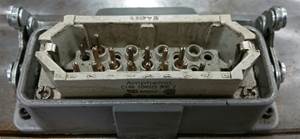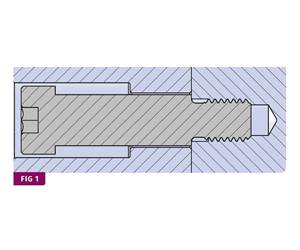Cleaning Molds: Part I
More labor hours are spent cleaning mold plates and tooling than any of the other repair stages (disassembly, troubleshooting, or assembly) combined.
More labor hours are spent cleaning mold plates and tooling than any of the other repair stages (disassembly, troubleshooting, or assembly) combined. This is true for two reasons: (1) Clean plates and tooling are critical to maximizing mold life and reliability and the quality of the product. (2) The vast majority of molds are still being cleaned completely by hand.
New (and old) technology concerning cleaning equipment and mold design that could drastically cut cleaning hours and tooling damage continues to be passed over. The next few articles will deal with cleaning methods and myths. We will also cover how to cost-justify new cleaning equipment as well as steel and plating improvements that will extend run cycles and permit molds to be cleaned more easily and quickly.
The cleaning culture
Mold cleaning is a process where major maintenance bottlenecks occur because molds are pulled faster than they can be cleaned and made production-ready. I have visited plants where molds line hallways and toolrooms and take up valuable bench space waiting only to be cleaned.
Many times, in order to meet production demands, molds get reset dirty, or the cleaning process is rushed, which means tooling is subjected to more damage through hurried handling. The question is asked, “Can we run it the way it is, or does it really need to be cleaned?”
In companies where “firefighting” is the accepted culture, the mold will be reset and started, and if the plastic parts come out clean, the mold runs as is. Once this happens a few times, a culture is fostered whereby it is assumed that molds only need to be cleaned when the residue level is bad enough to migrate onto the part, or when the mold just locks up (galls).
Some shops handle cleaning chores by enlisting non-skilled employees or toolroom apprentices to wash tooling and plates as fast as the repair technician can get them apart. Accurate troubleshooting of mold and part defects is then made difficult for the repair technician by washing off all track marks from the tooling and plates.
Standardize cleaning procedures
The idea of systemizing mold maintenance is based on establishing consistency in repairs required and repairs performed. Cleaning is an area where individual techniques greatly affect mold reliability, part quality, and the tooling budget.
To be cost-effective, mold cleaning must be performed at specified cycle frequencies and using specific instructions for different levels of cleaning (in-press, wipe-down, general, major). What’s more, mold cleaning should be performed only after troubleshooting mold and part defects, after repairs have been made, and after new tooling has been engraved with position numbers and installed.
Mold-cleaning procedures and frequencies are determined by visual inspection of a mold after a known number of cycles are run and after inspecting it for plating wear, track marks, and residue buildup in both vented and non-vented areas of tooling. It is important to learn how many cycles molds can safely run and to document observations concerning residue accumulation and wear. If not, mold cleanings will be taken for granted as a non-critical function, and expensive mold tooling will be treated like rusted garden tools.
All molds should have documented in-press servicing procedures and frequencies, based on a maximum cycle count set that is adhered to as much as possible. Critical to reliable production are the internal grease level and condition of gear racks, sliding cam blocks, internal pins and bushings, and other moving components. Other critical factors are water-line and bubbler contamination or blockage, manifold weepage, and rust and corrosion from water leaks or condensation. There are many areas of a mold where excess grime can cause problems without any prior warning from residue leaching out onto the part.
Attitude counts
Cleaning is an unpopular stage of repair for many employees who enjoy more the challenge of troubleshooting or machining. Cleaning is messy, monotonous, and a potential health risk. It is often presumed that little talent is required to accomplish the task. On the flip side, some repair techs live for the cleaning stage. It is an area where one can relax, crank up the radio, and scrub tooling for hours while looking busy.
Cleaning, it’s true, does not require the talents of a top-shelf toolmaker. But it is also not wise to place this responsibility in the hands of a new technician who is not familiar with the mold’s specific functions and defects or the critical seal areas of the tooling. Improper assignment of cleaning tasks will create continuing mold-performance deficiencies and will inflate the tooling budget through the addition of dings, burrs, rounded-over edges, premature plating or steel removal, and mixed up tooling. These types of issues start many of the fires that are endemic to a reactive maintenance culture that does not monitor or count defects and establish root causes.
How clean is clean enough?
The type of fouling or residue (chemical make-up and physical characteristics) the molding process leaves behind on your tooling will help determine your cleaning requirements. Many resins contain stabilizers, fillers, or release agents that leave residue in the form of grease, light oil, yellow waxy film, rust, or whitish dust. Some resins such as PVC will create hydrogen chloride gases that corrode many types of mold steels. Other residues from flame-retardants and antioxidants will plate out and eventually attack the steel.
Some types of color pigments stain steels and cause build-up that can be very difficult to remove. Even plain old water will do harm if left too long on untreated mold surfaces.
Molds should be cleaned only as much as necessary to carry them through a predetermined number of cycles. Scrubbing or blasting all oxidation stains and discoloration off non-critical tooling and plates every time a mold comes out of the press merely opens pores and slowly erodes the steel surface and edges, requiring replacement long before it should.
Unfortunately, it only takes minutes of run time to re-acquire the initial staining on unplated and non-stainless surfaces. This is seen in molds that are thoroughly cleaned, run for a couple of hours, then pulled for a changeover. In areas where much time was spent scrubbing unprotected steel, surface stains reappear quickly.
Many molds have “self-cleaning” vent passages, which means they are highly polished. Cleaning and then polishing vents to an SPI #A3 finish or better prevents residue from adhering to the rougher surface left by milling or grinding and allows the residue to be blown into the larger vent dump area. This keeps the vents cleaner longer.
Over-cleaning occurs primarily through abrasive manual use of too-coarse scrubbing pads, emery cloth, sandpaper, stones, or brushes with bristles of nylon, brass, or steel.
Also abrasive to mold surfaces are high-pressure blasting units using media like hard plastics, glass beads, walnut shells, and aluminum particles. If used frequently or in an unregulated maintenance environment, these abrasive methods slowly pound the mold surface like microscopic chisels, causing porosity to which residue adheres. Such abusive treatment is the primary reason molds experience quick residue buildup, excess wear, premature tooling failure, and flashing.
Finding the right cleaning equipment for your molds and processes, combined with documented methods and frequencies can reduce repair hours by as much as 50% and considerably reduce tooling wear. This makes the R.O.I. on cleaning equipment less than 60 days in many cases.
Typically, the best method will involve two or three different technologies designed to clean specific types of residue. We will get into that next month.
Steven Johnson worked as a toolmaker for 26 years, rebuilding and repairing multicavity molds for Calmar Inc. and then as mold-maintenance engineer for Hospira Inc., a medical device manufacturer. Today, he is the maintenance systems manager for Progressive Components and has his own business, MoldTrax in Ashland, Ohio, which designs and sells software for managing mold maintenance (www.moldtrax.com). He can be reached at steve@moldtrax.com or (419) 289-0281.
Related Content
Hot Runners: How to Maintain Heaters, Thermocouples, and Controls
I conclude this three-part examination of real-world problems and solutions involving hot runners by focusing on heaters, thermocouples, and controls. Part 3 of 3.
Read MoreHow to Optimize Pack & Hold Times for Hot-Runner & Valve-Gated Molds
Applying a scientific method to what is typically a trial-and-error process. Part 2 of 2.
Read MoreHow to Design Three-Plate Molds, Part 1
There are many things to consider, and paying attention to the details can help avoid machine downtime and higher maintenance costs, and keep the customer happy.
Read MoreWhy Shoulder Bolts Are Too Important to Ignore (Part 2)
Follow these tips and tricks for a better design.
Read MoreRead Next
Making the Circular Economy a Reality
Driven by brand owner demands and new worldwide legislation, the entire supply chain is working toward the shift to circularity, with some evidence the circular economy has already begun.
Read MoreLead the Conversation, Change the Conversation
Coverage of single-use plastics can be both misleading and demoralizing. Here are 10 tips for changing the perception of the plastics industry at your company and in your community.
Read MoreSee Recyclers Close the Loop on Trade Show Production Scrap at NPE2024
A collaboration between show organizer PLASTICS, recycler CPR and size reduction experts WEIMA and Conair recovered and recycled all production scrap at NPE2024.
Read More























